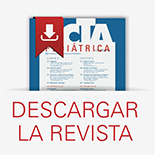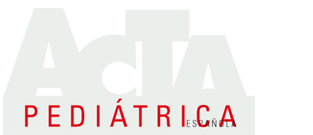Resumen
Objetivo: Estimar la relación entre la frecuentación de los niños y la de sus padres en una consulta de pediatría en atención primaria.
Material y métodos: Se analiza la frecuentación de 229 niños de 1, 2, 4, 6, 11 y 13 años, de 127 padres y 152 madres de estos niños. La frecuentación se obtuvo del programa de historia clínica del centro de salud OMI-AP. Se calculó la correlación entre las visitas de los niños y las de sus padres/madres, y se compararon las medias de visitas de los padres de niños normofrecuentadores y de padres de niños hiperfrecuentadores, considerando hiperfrecuentadores aquellos niños que acuden a la consulta un número de veces superior a 2 desviaciones estándar respecto a la media de los niños de su edad.
Resultados: No se encontró correlación entre la frecuentación de los niños pequeños y sus padres. En cuanto a los niños y niñas mayores (6 y 13 años), existe una relación lineal entre el número de sus consultas y las de sus madres, no encontrando esta correlación con el número de consultas de los padres. No se establecieron diferencias significativas entre el número de visitas al centro de salud de los padres de niños normo e hiperfrecuentadores.
Conclusiones: No encontramos relación entre la frecuentación de los padres y las madres de niños pequeños con la frecuentación de sus hijos. Los datos obtenidos nos permiten sugerir una relación entre la frecuentación de las madres de niños/as mayores y la de sus hijos/as.
Abstract
Objective: To determine the relationship between the frequency of visits of children and the visits of their parents to a pediatric primary care office.
Material and methods: We analyzed the frequency of visits of 229 children aged 1, 2, 4, 6, 11 and 13 years and that of the visits of 127 fathers and 152 mothers of those children. The frequency of visits was obtained with the OMI-AP software package for health centers. The linear correlation between the children's visits and those of their fathers/mothers was studied, and the mean number of visits on the part of parents who brought their children with a normal frequency was compared with the mean number of visits of parents who brought their children with a higher than normal frequency (number of visits greater than 2 standard deviations with respect to the mean for children of the same age).
Results: We found no correlation between the frequency of visits of fathers and mothers of little children. However, we observed a linear correlation between mothers of children aged 6 and mothers of children aged 13 and their sons/daugh¬ters, a correlation that did not exist with the fathers of the same children. There were no statistically significant differences between the numbers of visits on the part of the fathers of children who were brought with a normal frequency when compared with those who were brought with a higher than normal frequency.
Conclusions: We found no correlation between the frequency of visits of the fathers and mothers of small children and the frequency of visits of their sons/daughters. The data obtained suggests the existence of a correlation between the frequency of visits of the mothers of older children and that of their sons/daughters.














